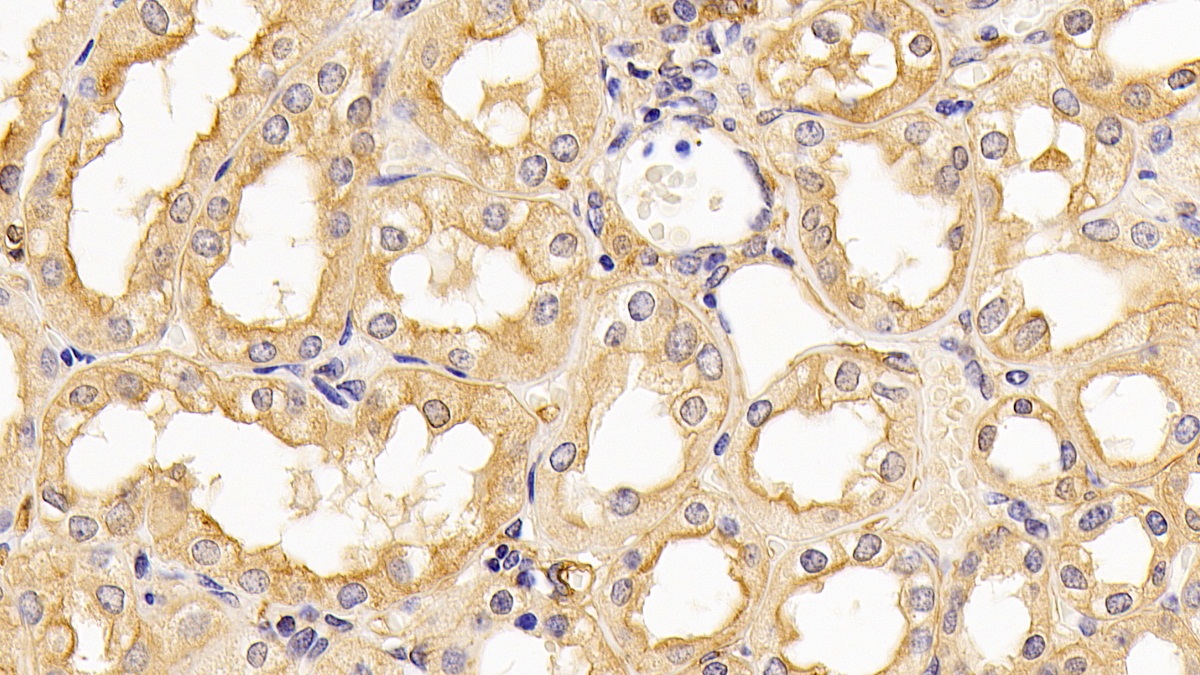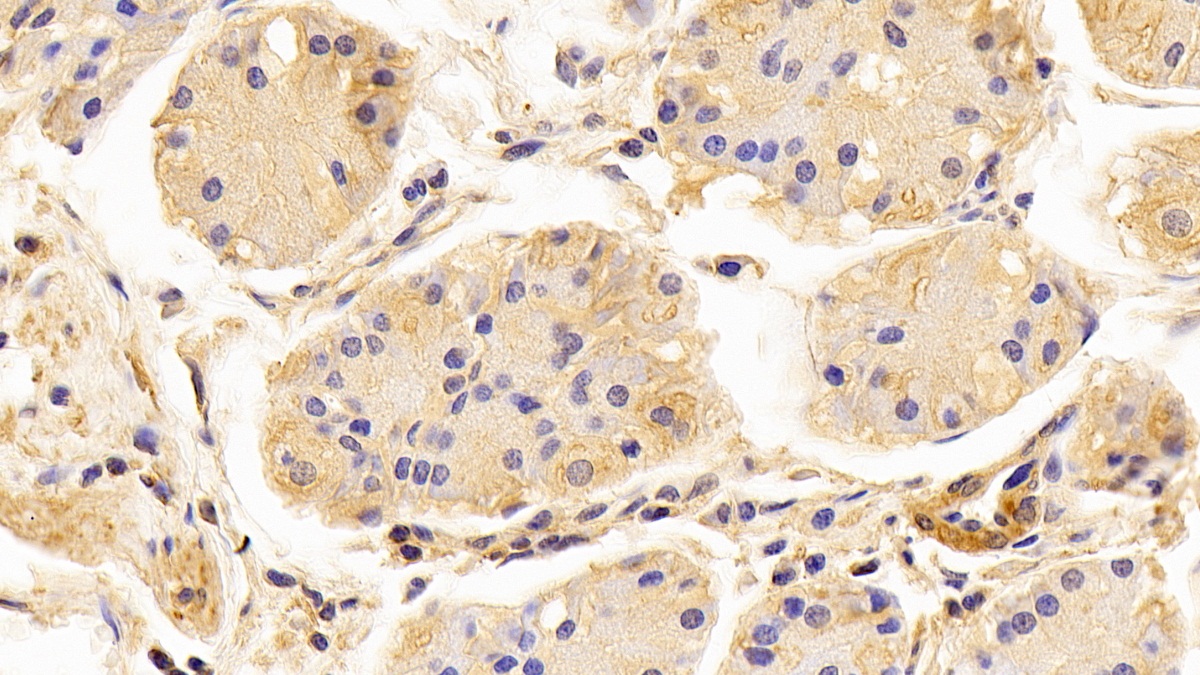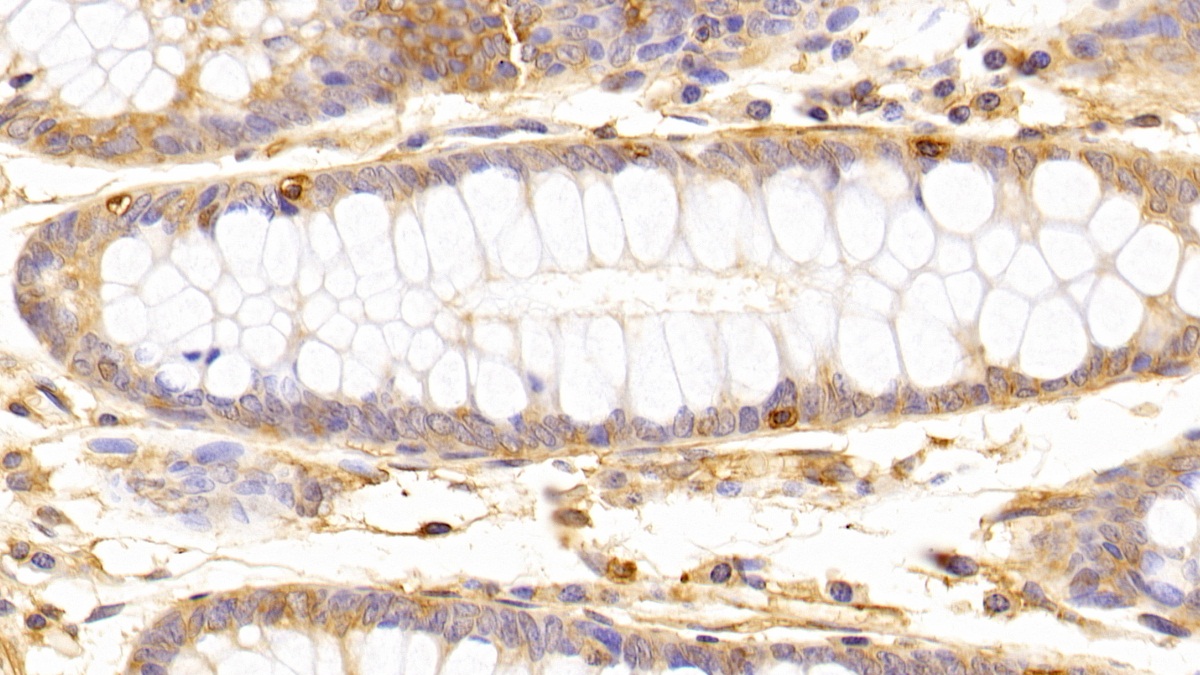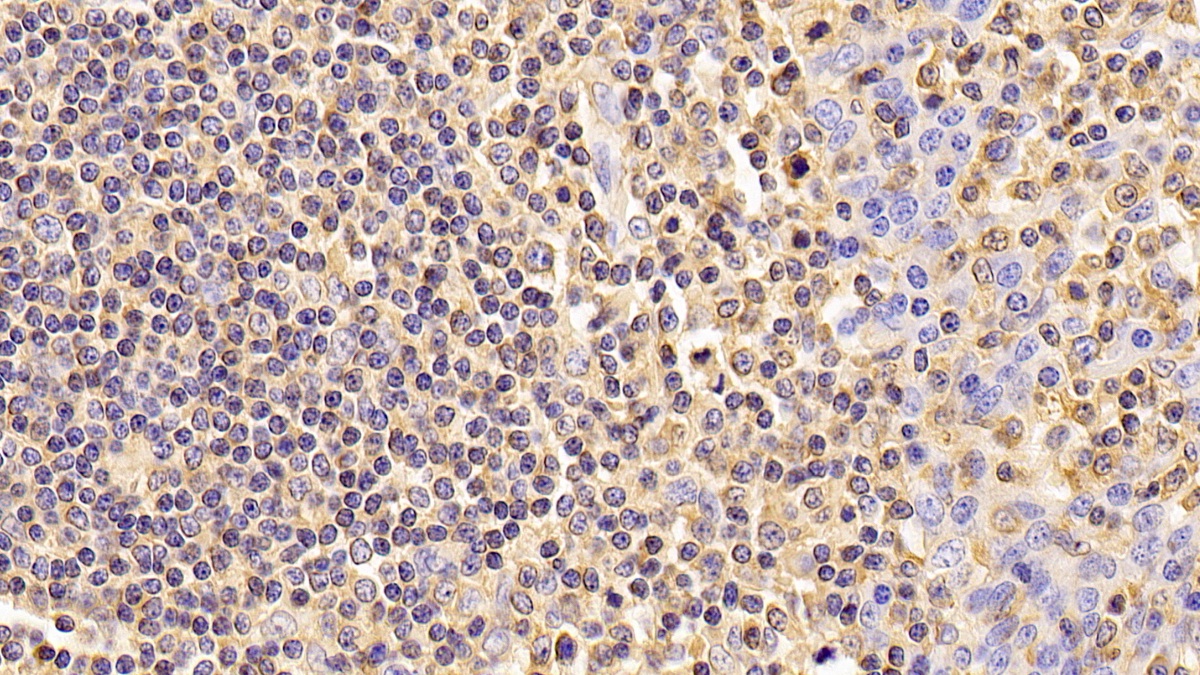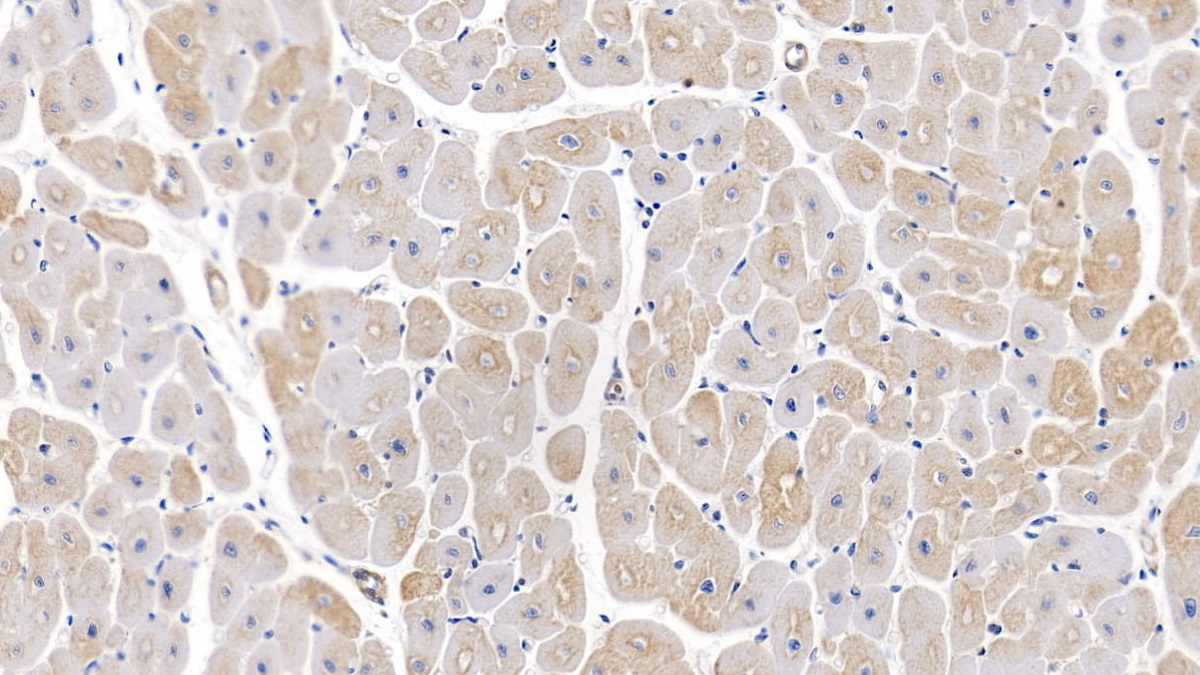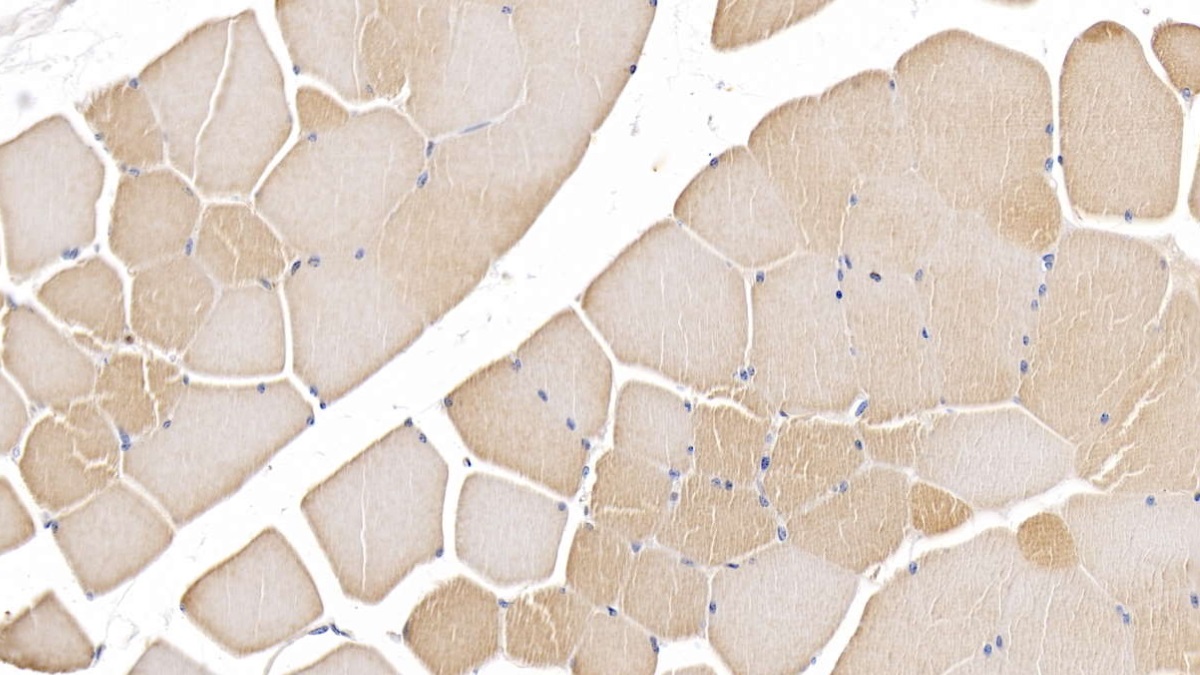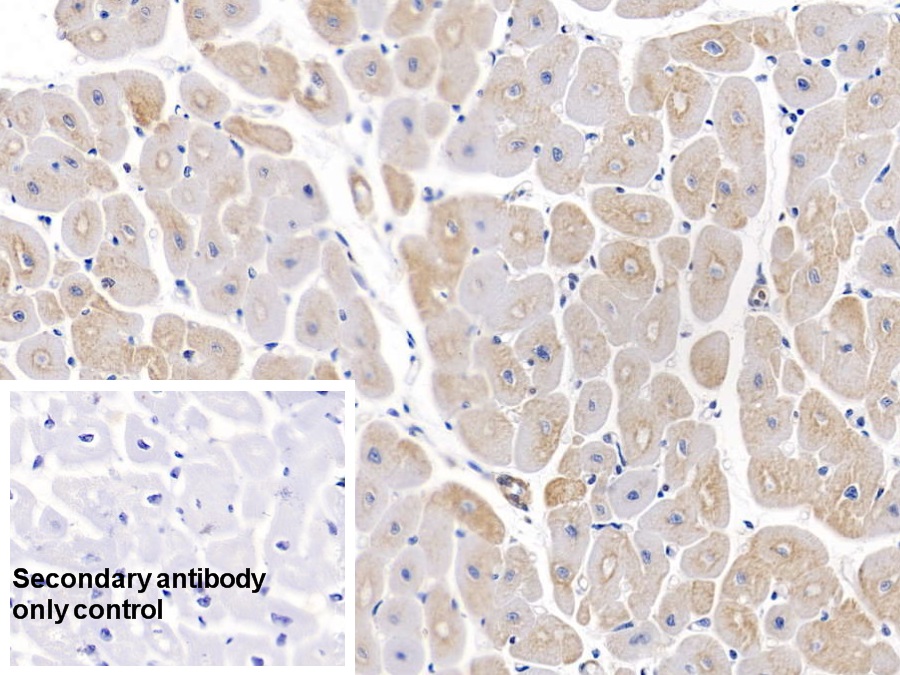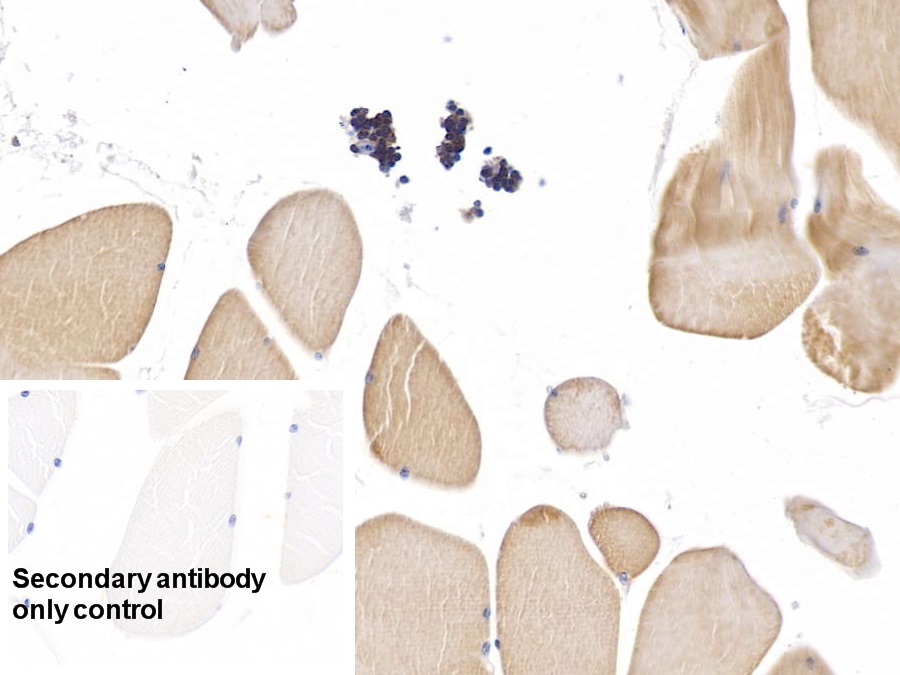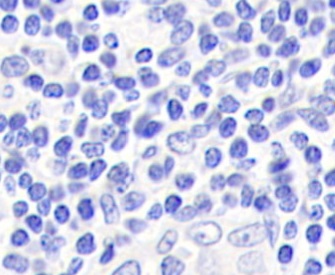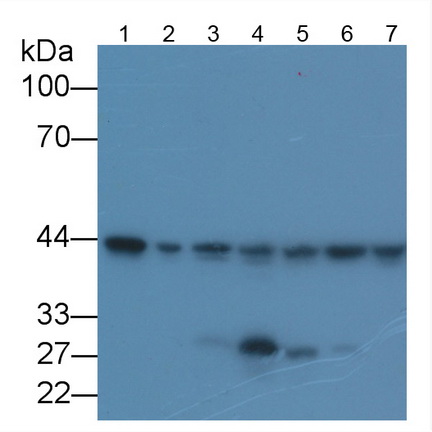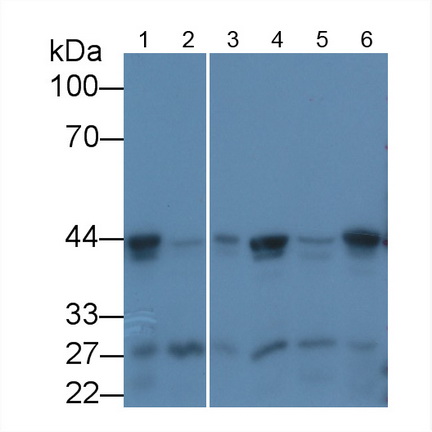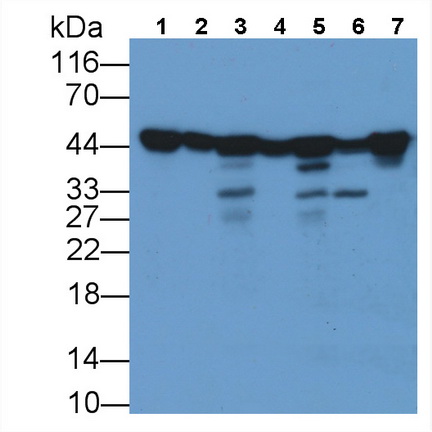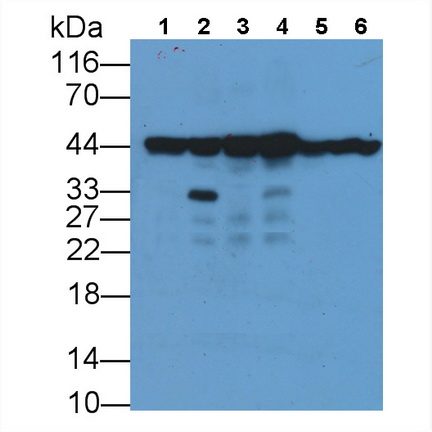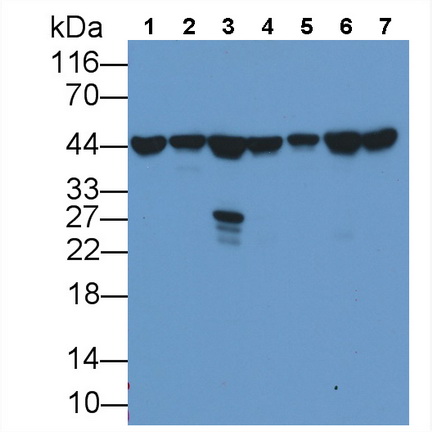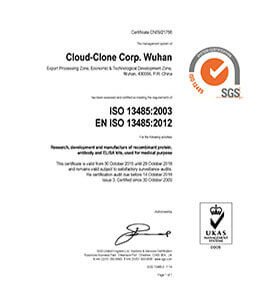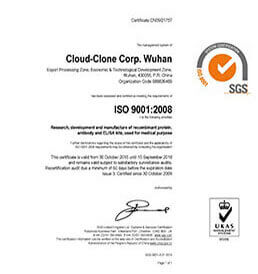Monoclonal Antibody to Beta Actin (ACTB)
Actin Beta; ACT-B; PS1TP5BP1; Actin, cytoplasmic 1; Actin, cytoplasmic 1, N-terminally processed
- Product No.MAB340Mi21
- Organism SpeciesHomo sapiens (Human), Mus musculus (Mouse), Rattus norvegicus (Rat), Cavia (Guinea pig ), Canis familiaris; Canine (Dog), Sus scrofa; Porcine (Pig), Bos taurus; Bovine (Cattle), Ovis aries; Ovine (Sheep), Equus caballus; Equine (Horse), Chicken (Gallus) Same name, Different species.
- SourceMonoclonal antibody preparation
- HostMouse
- Potency (Clone Number)C7
- Ig Isotype IgG2b Kappa
- PurificationProtein A + Protein G affinity chromatography
- LabelNone
- Immunogen RPB340Mi01-Recombinant Beta Actin (ACTB)
- Buffer Formulation0.01M PBS, pH7.4, containing 0.05% Proclin-300, 50% glycerol.
- TraitsLiquid
- Concentration1mg/mL
- Organism Species MoreHomo sapiens (Human), Mus musculus (Mouse), Rattus norvegicus (Rat), Cavia (Guinea pig ), Oryctolagus cuniculus (Rabbit), Canis familiaris; Canine (Dog), Sus scrofa; Porcine (Pig), Bos taurus; Bovine (Cattle), Capra hircus; Caprine (Goat), Equus caballus; Equine (Horse), Chicken (Gallus)
- ApplicationsWB; IHC
If the antibody is used in flow cytometry, please check FCM antibodies. - DownloadInstruction Manual
- UOM 20µl100µl 200µl 1ml 10ml
- FOB
US$ 128
US$ 300
US$ 428
US$ 1070
US$ 4280
For more details, please contact local distributors!
SPECIFITY
The antibody is a mouse monoclonal antibody raised against ACTB. It has been selected for its ability to recognize ACTB in immunohistochemical staining and western blotting.
USAGE
Western blotting: 0.01-2µg/mL;
Immunohistochemistry: 5-20µg/mL;
Optimal working dilutions must be determined by end user.
STORAGE
Store at 4°C for frequent use. Stored at -20°C in a manual defrost freezer for two year without detectable loss of activity. Avoid repeated freeze-thaw cycles.
STABILITY
The thermal stability is described by the loss rate. The loss rate was determined by accelerated thermal degradation test, that is, incubate the protein at 37°C for 48h, and no obvious degradation and precipitation were observed. The loss rate is less than 5% within the expiration date under appropriate storage condition.
GIVEAWAYS
INCREMENT SERVICES
-
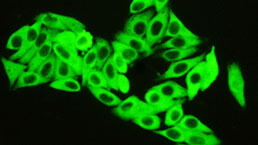 Antibody Labeling Customized Service
Antibody Labeling Customized Service
-
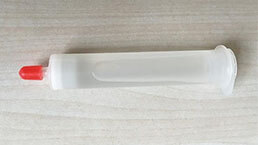 Protein A/G Purification Column
Protein A/G Purification Column
-
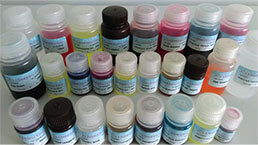 Staining Solution for Cells and Tissue
Staining Solution for Cells and Tissue
-
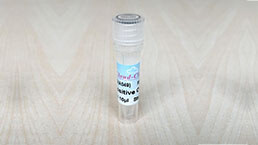 Positive Control for Antibody
Positive Control for Antibody
-
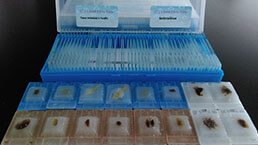 Tissue/Sections Customized Service
Tissue/Sections Customized Service
-
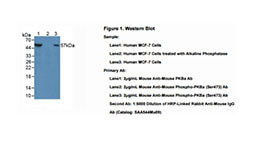 Phosphorylated Antibody Customized Service
Phosphorylated Antibody Customized Service
-
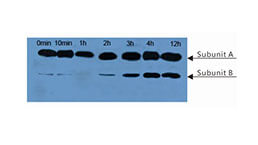 Western Blot (WB) Experiment Service
Western Blot (WB) Experiment Service
-
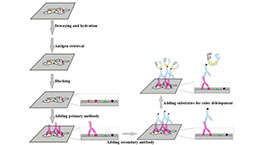 Immunohistochemistry (IHC) Experiment Service
Immunohistochemistry (IHC) Experiment Service
-
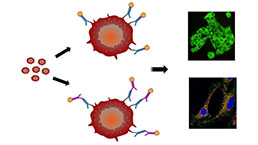 Immunocytochemistry (ICC) Experiment Service
Immunocytochemistry (ICC) Experiment Service
-
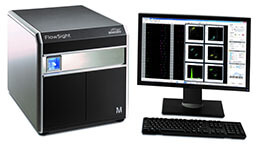 Flow Cytometry (FCM) Experiment Service
Flow Cytometry (FCM) Experiment Service
-
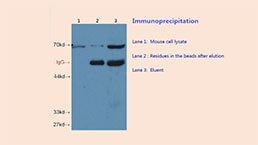 Immunoprecipitation (IP) Experiment Service
Immunoprecipitation (IP) Experiment Service
-
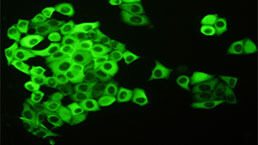 Immunofluorescence (IF) Experiment Service
Immunofluorescence (IF) Experiment Service
-
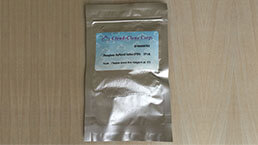 Buffer
Buffer
-
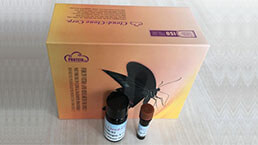 DAB Chromogen Kit
DAB Chromogen Kit
-
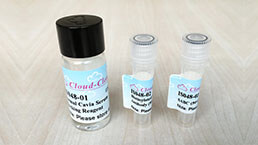 SABC Kit
SABC Kit
-
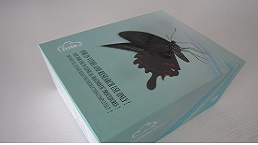 Long-arm Biotin Labeling Kit
Long-arm Biotin Labeling Kit
-
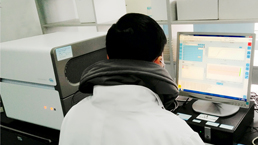 Real Time PCR Experimental Service
Real Time PCR Experimental Service
| Magazine | Citations |
| International Journal of Molecular Sciences | Nano-Nutrition of Chicken Embryos. The Effect of in Ovo Administration of Diamond Nanoparticles and L-Glutamine on Molecular Responses in Chicken Embryo Pectoral Muscles NCBI:PMC3856104 |
| European Journal of BioMedical Research | Expression of chloride channels in mouse skin incisional wounds 96 |
| Cell Metabolism | Targeted Elimination of Senescent Beta Cells Prevents Type 1 Diabetes |
| Biological & Pharmaceutical Bulletin | Neuroinflammation, Oxidative Stress, and Neurogenesis in a Mouse Model of Chronic Fatigue Syndrome, and the Treatment with Kampo Medicine Pubmed: 31902915 |
| Biological research | Linc-OIP5 in the breast cancer cells regulates angiogenesis of human umbilical vein endothelial cells through YAP1/Notch/NRP1 signaling circuit at a tumor … Pubmed: 32046779 |
| JOURNAL OF INVESTIGATIVE MEDICINE | Effect of ischemic postconditioning on cell apoptosis and expression of relevant genes in non-culprit coronary arteries Pubmed: 32784207 |
| bioscience biotechnology research asia | Malted Barley Improved the Structure and Function of Gastrocnemius Muscle of Hypercholesterolemic Mother Rats and their Offspring |
| Genes | Tryptophan Depletion Modulates Tryptophanyl-tRNA Synthetase-Mediated High-Affinity Tryptophan Uptake into Human Cells 33261077 |
| Nat Commun | POLRMT mutations impair mitochondrial transcription causing neurological disease 33602924 |
| Life Sci | Indole-linked 1, 2, 3-triazole derivatives efficiently modulate COX-2 protein levels in human THP-1 monocytes by suppressing AGE-ROS-NF-kβ nexus Pubmed:34990649 |
| J Ethnopharmacol | Isolation and characterization of anti-inflammatory and anti-proliferative compound, for B-cell Non-Hodgkin lymphoma, from Nyctanthes arbor-tristis Linn. Pubmed:35398498 |
| Multimedia Tools and Applications | Investigation of single beam ultrasound sensitivity as a monitoring tool for local hyperthermia treatment in breast cancer |
| Catalog No. | Related products for research use of Homo sapiens (Human), Mus musculus (Mouse), Rattus norvegicus (Rat), Cavia (Guinea pig ), Canis familiaris; Canine (Dog), Sus scrofa; Porcine (Pig), Bos taurus; Bovine (Cattle), Ovis aries; Ovine (Sheep), Equus caballus; Equine (Horse), Chicken (Gallus) Organism species | Applications (RESEARCH USE ONLY!) |
| RPB340Mi01 | Recombinant Beta Actin (ACTB) | Positive Control; Immunogen; SDS-PAGE; WB. |
| CAB340Mi01 | Anti-Beta Actin (ACTB) Polyclonal Antibody | WB |
| PAB340Mi01 | Polyclonal Antibody to Beta Actin (ACTB) | WB; IHC |
| MAB340Mi22 | Monoclonal Antibody to Beta Actin (ACTB) | WB; IHC |
| CAB340Mi22 | Anti-Beta Actin (ACTB) Monoclonal Antibody | WB |
| MAB340Mi23 | Monoclonal Antibody to Beta Actin (ACTB) | WB; IHC; ICC/IF |
| MAB340Mi21 | Monoclonal Antibody to Beta Actin (ACTB) | WB; IHC |
| MAB340Mi24 | Monoclonal Antibody to Beta Actin (ACTB) | WB |
| SEB340Mi | ELISA Kit for Beta Actin (ACTB) | Enzyme-linked immunosorbent assay for Antigen Detection. |
| SCB340Mi | CLIA Kit for Beta Actin (ACTB) | Chemiluminescent immunoassay for Antigen Detection. |
| LMB340Mi | Multiplex Assay Kit for Beta Actin (ACTB) ,etc. by FLIA (Flow Luminescence Immunoassay) | FLIA Kit for Antigen Detection. |
| KSB340Mi01 | ELISA Kit DIY Materials for Beta Actin (ACTB) | Main materials for "Do It (ELISA Kit) Yourself". |
| PGB340Mi01 | Primer Pair for Beta Actin (ACTB) | PCR |


